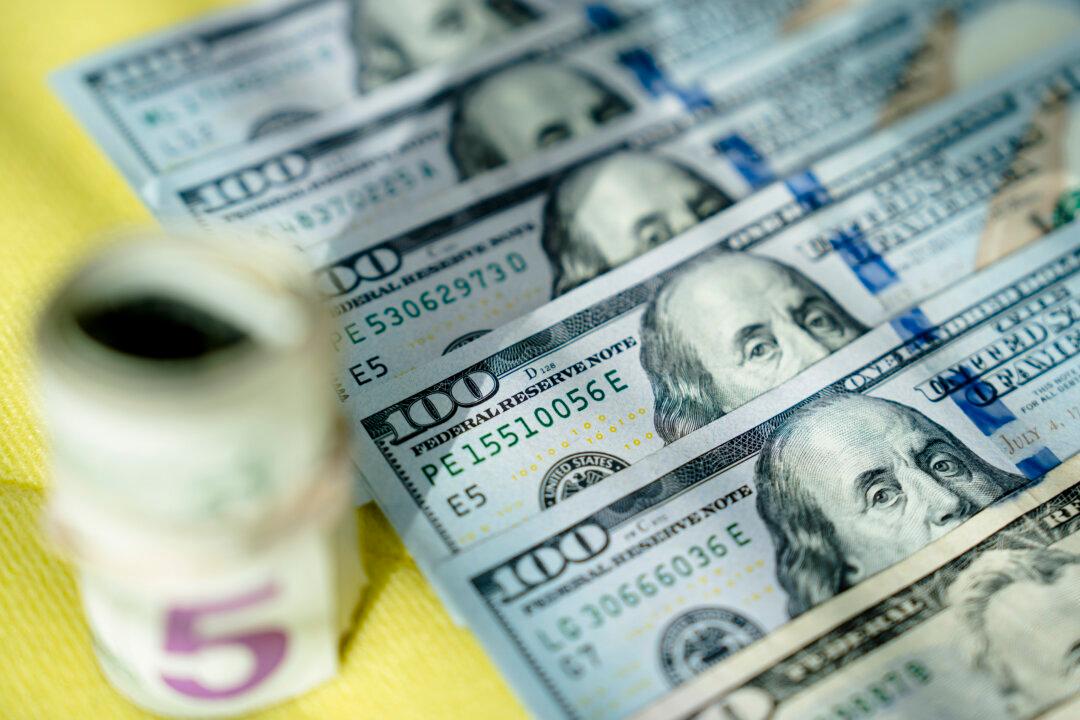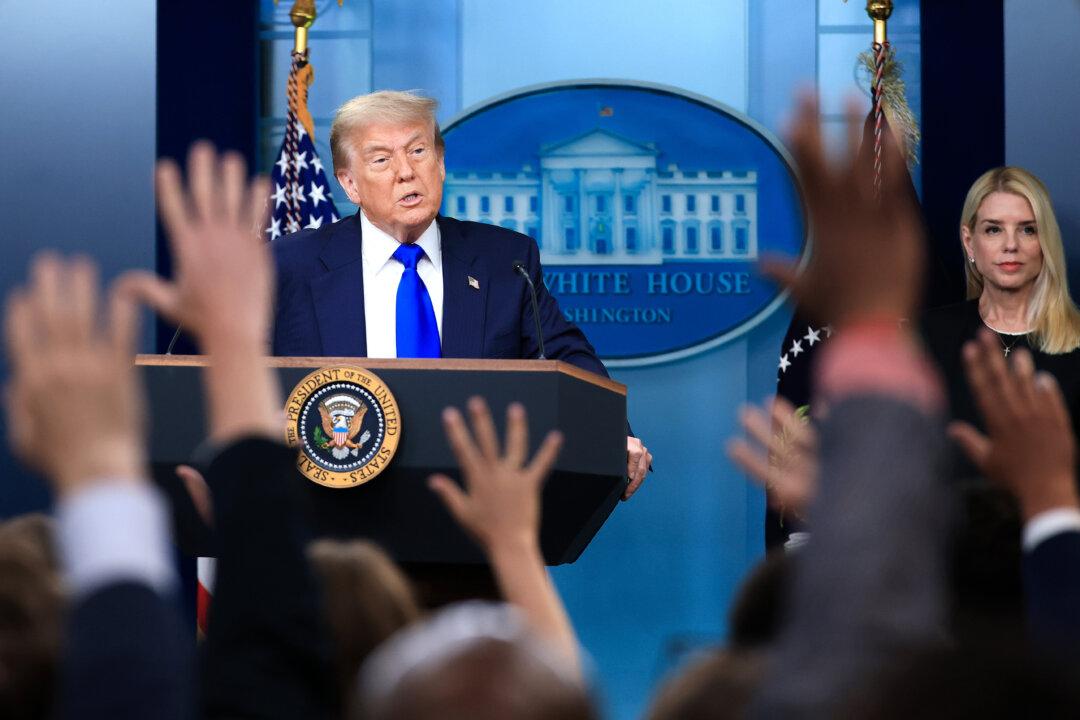WASHINGTON—A legal battle is unfolding over President Donald Trump’s “Liberation Day” tariffs, but trade experts say any setbacks are unlikely to stop the administration from keeping pressure on U.S. trading partners.
On May 28, a federal trade court struck down most of Trump’s sweeping reciprocal tariffs, including a 10 percent baseline tariff on almost all imports. The following day, however, the U.S. Court of Appeals for the Federal Circuit temporarily reinstated them, pausing the lower court’s ruling.
Although the legal fight is ongoing and the block could still be reinstated, analysts warn that foreign governments shouldn’t assume America’s rebalancing of trade with them will be over anytime soon. Trump still has multiple legal avenues that allow him to impose targeted tariffs and force countries back to the negotiating table.
“The president has a number of tools,” said Charles Benoit, international trade attorney and trade counsel for the Coalition for a Prosperous America, in an interview with The Epoch Times.
Benoit pointed to several measures that the administration could employ if his reciprocal tariffs were again blocked, specifically referencing Section 122 and Section 301 of the Trade Act of 1974.
Section 122 allows a president to impose tariffs of up to 15 percent for 150 days on imports from countries with large trade surpluses. Section 301 authorizes the president to resolve unfair trade practices by foreign governments through the use of tariffs, sanctions, and other retaliatory measures.
Section 232 of the Trade Expansion Act of 1962 is another avenue the White House could explore. This provision empowers the president to restrict imports if they are deemed a threat to national security. Trump has already invoked Section 232 to impose tariffs on steel, aluminum, and automobiles.
Section 338 of the Tariff Act of 1930 is an additional measure the president could explore, Benoit said. This provision grants the president the power to slap extra import duties and new tariffs of up to 50 percent on foreign goods entering the U.S. market.
But it is also crucial to work with Congress on these tariffs, says Benoit.
“I think that in addition to exploring the other presidential tools, they should also spare no time and work with Congress to get the 10 percent universal tariffs, at a minimum, legislated,” he said.
Tariffs Blocked, Then Reinstated
On May 28, a federal trade court ruled against most of Trump’s sweeping April 2 “Liberation Day” tariffs, determining that he had exceeded his authority in implementing them.The U.S. Court of International Trade found that the International Emergency Economic Powers Act (IEEPA) does not grant the president unlimited tariff authority. The court stressed that Congress, not the president, has the authority to implement tariffs, and deemed the administration’s justification for addressing the trade deficit as a national emergency to be insufficient.
The three-judge panel blocked most of the president’s levies, including the 10 percent baseline tariff placed on most trading partners and the additional import duties on China, Canada, and Mexico related to fentanyl trafficking. The judges gave the White House 10 days to formally complete the removal of the tariffs.
The decision was based on two lawsuits, including an April 23 filing by a coalition of 12 states that argued Trump’s tariff plans were subject to his “whims rather than the sound exercise of lawful authority.”
The court’s ruling does not impact other tariffs on U.S. imports, such as the 25 percent duties on steel, aluminum, and automobiles implemented under Section 232. The decision also does not impact Section 301 tariffs imposed before Trump’s second term, nor does it interfere with ongoing investigations under Sections 232 and 301.
Market Reaction
Following the court’s ruling, U.S. stocks surged in after-hours trading on May 28. The blue-chip Dow Jones Industrial Average and the tech-heavy Nasdaq Composite Index soared as much as 500 points.At the May 29 opening bell, the overall rally quieted down as investors assessed the trade situation. The Dow was flat, the Nasdaq added more than 100 points, and the broader S&P 500 edged up about 0.4 percent.
Yields on U.S. government bonds were mostly in the red, with the benchmark 10-year Treasury yield sliding below 4.46 percent.
Bill Adams, chief economist for Comerica Bank, says the latest development in trade policy “reinforces the depth of uncertainty” hanging over the economy this year.
“Tariff uncertainty is causing many businesses to slow-roll investment and hiring decisions while they wait for clarity,” Adams said in a note emailed to The Epoch Times.
The investors also took note of a Goldman Sachs report stating that Trump had tools at his disposal to circumvent the trade court’s decision. The economists stated that the ruling “might not change the final outcome for most major U.S. trading partners.”
There’s a swift workaround that does not require formal investigations, the Goldman analysts said.
“The administration could quickly replace the 10 percent across-the-board tariff with a similar tariff of up to 15 percent under Sec. 122.”
Administration’s Response
National Economic Council Director Kevin Hassett said that the administration is operating on the assumption that the White House’s appeals will be successful and the courts will uphold Trump’s tariffs.“If there are little hiccups here or there because of decisions that activist judges make, then it shouldn’t ... concern you at all, and it’s certainly not going to affect the negotiations,” Hassett said in a May 29 interview with the Fox Business Network.
He confirmed that the administration has completed a few trade deals that are awaiting the president’s review.
“There are many, many deals coming, and there were three that basically look like they’re done,” Hassett stated.
Meanwhile, White House press secretary Karoline Leavitt said that the New York-based court’s decision “jeopardizes America’s standing in international trade.”
Leavitt said that other countries understand that “the president reserves other tariff authorities, Section 232, for example, to ensure that America’s interests are being restored around the world.”
Negotiation Outlook
Canadian Prime Minister Mark Carney welcomed the U.S. court’s decision, stating that it is “consistent with Canada’s long-standing position” that the U.S. president’s levies are “unlawful as well as unjustified.”Still, Carney stated that the pressure on Canada to negotiate a mutually beneficial deal with the United States remains.
“We recognize that our trading relationship with the U.S. is still profoundly and adversely affected,” he said on the floor of the House of Commons on May 29.
This court ruling would appear to alleviate some of the pressure on trade partners, Benoit noted, but not enough to allow them to avoid negotiations.
“I think that a foreign government would be making a mistake if they thought that they didn’t have to worry anymore. I think that the president still has a lot of power even without using IEEPA.”
The latest legal battle comes at a vital time as Trump and senior administration officials have signaled progress in trade negotiations with several foreign governments, including the Chinese communist regime and the European Union.
Still, former Commerce Secretary Wilbur Ross said it is crucial to maintain negotiations with foreign markets like the European Union to dismantle the bloc’s lopsided trade barriers.
“If people can come to an understanding that might very well be enough to postpone the introduction of the tariff,” Ross said in an interview with The Epoch Times.
The challenge, Ross says, is that many of the nontariff trade barriers are imposed by individual member states. Additionally, Ross said, it takes the EU leadership a while to communicate with member nations.
Before the Memorial Day long weekend, Trump threatened a 50 percent tariff on the 27-member trade bloc, but walked back the levy two days later to allow for negotiations. The tariff was delayed to July 9.
“I don’t think there’s any hope of a full final deal, but there may be enough hope to have a continuation,” Ross said.








